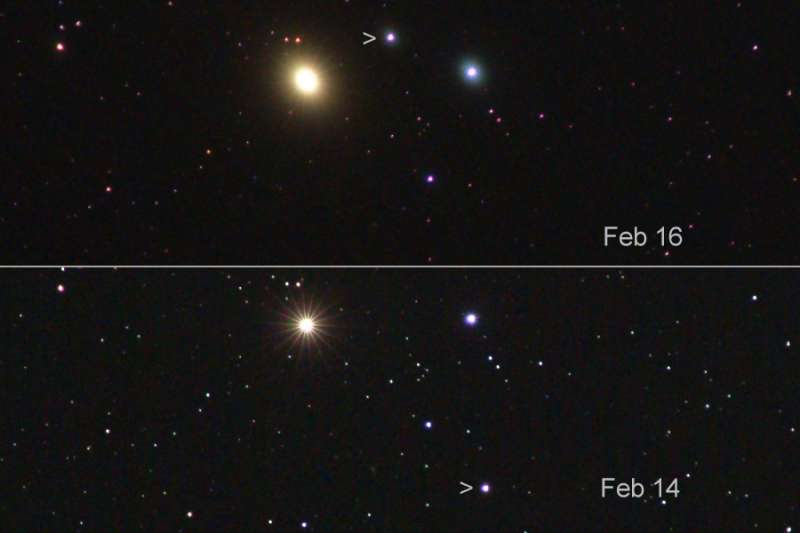Credit & Copyright: Jimmy Westlake
Explanation:
Main belt
asteroid 4 Vesta is at its brightest now.
The small world
is near opposition (opposite the Sun in the sky)
and closest to Earth.
But even at its brightest,
Vesta
is just too faint to spot with the naked-eye.
Still, over the next few days it will be relatively easy to
find in the constellation Leo, sharing a typical binocular field of
view with bright star
Gamma Leonis
(aka Algieba).
In fact on February 16
Vesta
passed between Gamma Leonis and close neighbor on the sky 40 Leonis.
Gamma Leonis is the brightest star in these two panels, while
the second brightest star, 40 Leonis, is directy to its right.
As marked, Vesta is the third brightest "star" in the field.
Vesta shifts position between the two panels from well below 40 Leonis
on Feb. 14 to near the top of the frame from Feb. 16, shooting the gap
between the close Gamma/40 Leonis pair.
Of course, premier close-up views of the asteroid will be possible
after the ion-powered Dawn
spacecraft arrives at Vesta in August of 2011.
1999 2000 2001 2002 2003 2004 2005 2006 2007 2008 2009 2010 2011 2012 2013 2014 2015 2016 2017 2018 2019 2020 2021 2022 2023 2024 2025 |
Январь Февраль Март Апрель Май Июнь Июль Август Сентябрь Октябрь Ноябрь Декабрь |
NASA Web Site Statements, Warnings, and Disclaimers
NASA Official: Jay Norris. Specific rights apply.
A service of: LHEA at NASA / GSFC
& Michigan Tech. U.
|
Публикации с ключевыми словами:
Vesta - asteroid - Веста - астероиды
Публикации со словами: Vesta - asteroid - Веста - астероиды | |
См. также:
Все публикации на ту же тему >> | |
